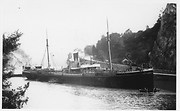 Hartlepool Sports & Leisure
Hartlepool Sports & Leisure
- Cinemas, Theatres & Dance Halls
- Musicians & Bands
- At the Seaside
- Parks & Gardens
- Caravans & Camping
- Sport
 Hartlepool Transport
Hartlepool Transport
- Airfields & Aircraft
- Railways
- Buses & Commercial Vehicles
- Cars & Motorbikes
- The Ferry
- Horse drawn vehicles
 A Potted History Of Hartlepool
A Potted History Of Hartlepool
- Unidentified images
- Sources of information
- Archaeology & Ancient History
- Local Government
- Printed Notices & Papers
- Aerial Photographs
- Events, Visitors & VIPs
 Hartlepool Trade & Industry
Hartlepool Trade & Industry
- Trade Fairs
- Local businesses
- Iron & Steel
- Shops & Shopping
- Fishing industry
- Farming & Rural Landscape
- Pubs, Clubs & Hotels
 Hartlepool Health & Education
Hartlepool Health & Education
- Schools & Colleges
- Hospitals & Workhouses
- Public Health & Utilities
- Ambulance Service
- Police Services
- Fire Services
 Hartlepool People
Hartlepool People
 Hartlepool Places
Hartlepool Places
 Hartlepool at War
Hartlepool at War
 Hartlepool Ships & Shipping
Hartlepool Ships & Shipping

Netley Abbey Voyage History
We currently have no voyages listed for this vessel.
Related items :
 Netley Abbey - collision
Netley Abbey - collision
Masters: 1880-82 RS Horn: 1883-89 H Vyryan: 1890 Cooper: 1891-92 E Barnett: 1894 G Batty: 1895 J Clark; 1899 GM Lewis
Netley Abbey foundered after a collision with the HMS Surprise 2 miles south of Shambles lightship off Dorset on 4 August 1899.
Netley Abbey left Cardiff in the early morning of 5 August 1899 on a voyage for Cronstadt with a cargo of 2,300 tons of coal, a crew of 24 & 1 passenger. Later that day off St Albans Head she struck a very thick fog so cut her speed to dead slow. The British warship Surprise entered the fog bank from the opposite end & reduced her speed to 8 knots & kept her siren on constant. The fog was so thick that the HMS Surprise, a 1650 ton despatch vessel-was almost on Netley Abbey before the two vessels became visible to each other. The Netley Abbey was just drifting across the bows of the Surprise when Commander FW Fane-Hervey ordered full speed astern but the Surprisecrashed into the collier with such force that 2 or 3 feet of her bows became wedged between the beams of Netley Abbey. Because the two ships were locked together for upwards of 10 minutes-although there was no time to collect their belongings-those aboard Netley Abbey were able to clamber aboard the Surprise whose crew managed to free her &, badly damaged, they got her to port. The collision took place at 4.30pm & it was thought that Netley Abbey sunk in about 20 minutes, although with the heavy fog this would have been hard to ascertain. It was midnight when the Surprisereached Spithead. The stranded crew were taken to the Sailor’s Home & subsequently got back to Cardiff. The Surprise was a dispatch Vessel & had left Spithead that morning on a voyage for Malta to resume her Mediterranean duties. A court martial was held on board the Victory at Portsmouth with Commander Fane-Hervey & Lt. Ross on the charge of having hazarded the ship on the occasion of her collision. Lieutenant Ross was acquitted & Commander Fane-Hervey was admonished to be more careful in future.
More detail » Pyman S.S. Co. Ltd.
Pyman S.S. Co. Ltd.
George Pyman was born in May 1822 in Sandsend, North Yorkshire. He went to sea as an apprentice and by 1843 he was Master of the vessel Nameless.
He married Elizabeth English in 1843 and they had two daughters and seven sons.
In 1850 he left the sea and the family settled in West Hartlepool where he went into partnership with his brother-in-law Francis English, as grocers and ship chandlers. In about 1854 he changed direction and went into partnership with Thomas Scurr as shipbrokers for the local collieries. They owned shares in a number of sailing vessels. Other shareholders included Francis English, John Smurthwaite, Thomas Wood & Ralph Ward Jackson.
Thomas Scurr died in 1861 and George then formed his own company as George Pyman & Co. In 1865 he purchased his first steamship, the George Pyman, and gradually shares in the brigs were sold off. Eventually the company became the largest owners of steamships in the north of the U.K.
In 1873 Thomas Bell of Newcastle joined as a partner in the firm. From 1879 the company opened branches in Hull, Grimsby, Immingham and Glasgow. When George retired in 1882 the Bell family took over the running of the company.
Pyman, Watson & Co. was set up in Cardiff in 1874 by John, one of George’s sons along with Thomas Edward Watson and Francis and Frederick, another two of his sons, set up Pyman Bros. in London in 1903. Some of these companies ships were registered in West Hartlepool.
George was elected a Poor Law Guardian in 1861, an Improvement Commissioner in 1868, and was sitting on the Durham County Bench from 1872. In 1879 he was appointed Vice Consul for Belgium and in 1888 was elected the second Mayor of West Hartlepool. In 1895 he received the honour of being made a Freeman of the Borough. George died in November 1900 at his home, Raithwaite Hall.
There is a wealth of further information in Peter Hogg’s book ‘The Pyman Story’.
More detail »




